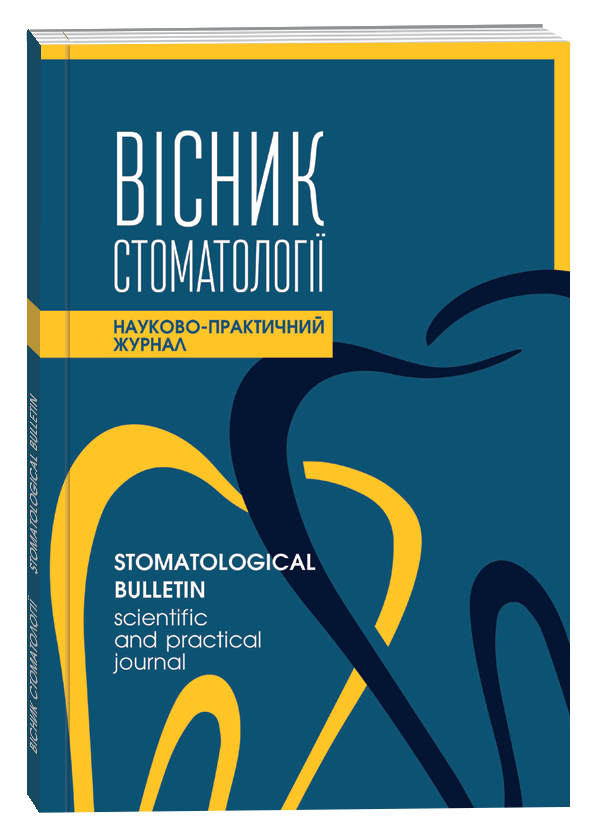LIPID METABOLISM IN THE PATHOGENESIS OF PARESTHETICALLY -PAIN SYNDROME
Keywords:
glossalgia, hyperlipidemia, pathogenesisAbstract
It is known that lipids perform important physiological functions in the human body, including structural, catalytic, transport for lipidophilic hormones, vitamins and other biologically active substances. At the same time, fat metabolism is controlled by vegetative innervation and is corrected by the central nervous system.
The levels of cholesterol and blood β-lipoproteins were studied in 108 patients with glossalgia aged 44 to 70 years old (33 men and 75 women) suffering from one to three years. According to the intensity of burning pain, they are divided into two groups - with moderate and intolerant burning sensation. The majority of patients had a pathology of the digestive organs (40 people), the vascular or nervous systems (5-6 people), and in 47 persons the pathology of the internal organs was combined.
As a result of a biochemical study of the blood of patients and persons in the control group, it was proved that with a paresthetic-pain phenomenon, a frank violation of the levels of the main components of blood lipids, such as cholesterol and ß - lipoproteins, occurs. So, on average, the cholesterol content in patients reached the level of 5.68±0.21 μmol / l, and ß - lipopro-teins – 25.42±1.52 μmol / l, which was significantly higher from the control group of practically healthy individuals (p<0.02). The study also found that hypercholesterolemia occurs in 80% of cases with glossalgia, at the same time hyperbetalipoproteinemia – in 63 % of cases and only in a small percentage of these individuals, lipid metabolism rates were ei-ther lower or at the control group level. The data obtained led to the conclusion that in the pathogenesis of glossalgia, hyper-lipidemia is one of the leading links in its chain, making it diffi-cult to transcapillary exchange in areas of the oral mucosa and facial skin, contributing to ischemia in the blood supply zones. Such violations require appropriate medical correction in com-plex therapy.
References
Вейн А. М. Ноцицептивная и невропатическая боль / А. М. Вейн, Т. Г. Вознесенская, А. Б. Данилов // Болевые синдромы в неврологической практике. – Москва, 2001. – С. 35-38.
Роль метаболизма липидов и катехоламинов в патогенезе глосалгии / Е. Н. Дычко, И. В. Ковач, В. А. Вовк, П. Л. Срибник // Український стоматологічний альманах. – 2009. – № 2. – С. 54-55.
Опришко В. І. Знеболююча активність антиконвульсан-тів – погляд фармаколога / В. І. Опришко // Медичні перспективи. – 2012. – Т. 27, № 2. – С. 14-17.
Косенко К. М. Розповсюдженість та характер уражень слизової оболонки порожнини рота у гірників залізорудних шахт Кривбасу / К. М. Косенко, О. А. Глазунов // Медичні перспективи. – 2011. – Т. 16, №2, ч. 1. – С. 101-104.
Potter R. Genetic studies of juvenile periodontitis / R. Potter // J. Dent. Res. – 1990. – Vol. 69. – P. 94-95.
Herbert Michel О проблемах определения факторов рис-ка возникновения пародонтита / Michel Herbert // Новое в стомато-логии. – 2002. – № 4. – С. 6-9.
Canny Y. Lipid mediator-induced expression of bactericidal/ permeability-increasing protein (BPY) in human mucosal epithelia / Y. Canny, O. Levy, Y. T. Futura // DNAS. – 2002. – Vol. 99, N 6. – P. 3902-3907.
Лемперт М. Д. Биохимические методы исследования / Лемперт М. Д. – Кишинев, 1968. - 201 с.









